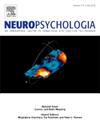在不同的运动形式中,与双手互动运动相关的大脑活动
IF 2
3区 心理学
Q3 BEHAVIORAL SCIENCES
引用次数: 0
摘要
运动观察(MO)和运动想象(MI)是运动学习的重要方法。大量的研究探索了简单的单手动作的过程机制,但对双手交互动作的脑活动模式的研究并不广泛。虽然同步运动观察(MO)和运动想象(MI)的结合可以提高运动表现,但MO + MI在两个连续不同运动中连续表现的大脑机制尚不清楚。特别是,目前尚不清楚前者的运动任务如何影响后者,以及这两种运动任务如何交换。在本研究中,我们招募了没有任何篮球经验的参与者,要求他们用左手和右手以不同的运动形式(MO-MO、MO-MI、MI-MO和MI-MI)完成一个投掷篮球的动作,并通过功能连接(FC)和相位振幅耦合(PAC)来评估脑机制。结果显示,大脑连接在额-顶叶网络和顶叶-枕叶网络。由于运动意图调整和注意准备的需要,这种联系在左右交换期间尤为强烈。此外,在所有运动模式中都出现了与α、β和γ振荡幅度相耦合的θ振荡,这表明θ振荡协调和调节了高频振荡,有助于参与者整合第一阶段和第二阶段之间的信息。此外,MO-MI的脑活动比MI-MI更强,这表明除了第一阶段的内隐学习视觉信息和MO的运动转移外,MO诱导的基础意象也增强了MI后期的运动表现。本文章由计算机程序翻译,如有差异,请以英文原文为准。
Brain activities associated with two-handed interactive movement during different motor forms
Motor observation (MO) and motor imagery (MI) are important methods for motor learning. Abundant studies have explored the process mechanism of simple single-hand movements, however the brain activity patterns for two-hand interactive movements have not been widely studied. Although combined synchronously motor observation (MO) and motor imagery (MI) for one movement can enhance motor performance, the brain mechanisms underlying the performance of MO + MI sequentially in two successive different movements remains unclear. In particular, it is unclear how the former motor task influences the latter, and how the two motor tasks can be exchanged. In this study, we recruited participants without any basketball experience and asked them to complete a throwing basketball movement with their left and right hands in different motor forms (MO-MO, MO-MI, MI-MO, and MI-MI), and assessed the brain mechanisms through functional connectivity (FC) and phase-amplitude coupling (PAC). The results revealed brain connections in the fronto-parietal and parieto-occipital networks. Owing to the necessity of motor intention adjustment and attention preparation, the connection was particularly strong during the left- and right-hand exchange periods. In addition, theta oscillation phase coupling on the amplitudes of alpha, beta, and gamma oscillations appeared in all motor patterns, suggesting that theta oscillation coordinated and modulated higher-frequency oscillations to help participants integrate the information between the first and second stages. In addition, MO-MI had stronger brain activities than MI-MI, indicating that not only the visual information for implicit learning and motor transfer from MO in the first stage, but also underlying imagery induced by MO, enhanced the motor performance of MI in the latter period.
求助全文
通过发布文献求助,成功后即可免费获取论文全文。
去求助
来源期刊

Neuropsychologia
医学-行为科学
CiteScore
5.10
自引率
3.80%
发文量
228
审稿时长
4 months
期刊介绍:
Neuropsychologia is an international interdisciplinary journal devoted to experimental and theoretical contributions that advance understanding of human cognition and behavior from a neuroscience perspective. The journal will consider for publication studies that link brain function with cognitive processes, including attention and awareness, action and motor control, executive functions and cognitive control, memory, language, and emotion and social cognition.
 求助内容:
求助内容: 应助结果提醒方式:
应助结果提醒方式:


